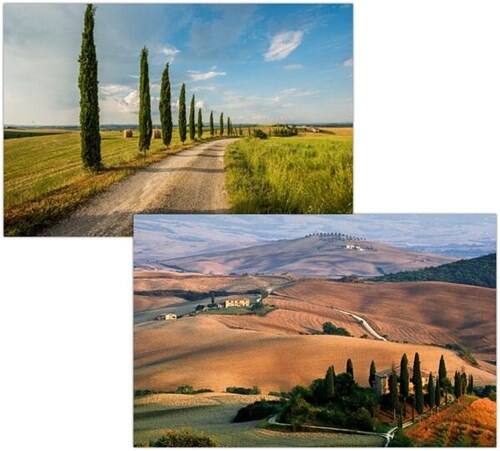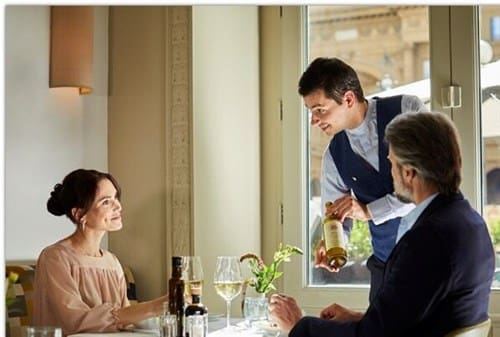Over the past year, on a mission to live a full and cultured life, we have been enjoying quality wines in the comfort of our homes. With the end of lockdown in sight, we can now venture back to the great outdoors, indulge our senses and experience Italy's most historic and famous wine regions. Paolo Piccardi, our sommelier at Hotel Savoy in Florence, gives us his perspective on this fascinating region and how to find the best vintages and why choosing to buy with a greater understanding of the wines, the producers and the vineyards is the future of wine drinking.
What type of wine is Tuscany famous for?
The wine cellars of Chianti Classico are just a few kilometres away from Florence, and those of Brunello di Montalcino are further south towards Siena. The wines of Montalcino, Bolgheri and the inland areas of Chianti Classico represent the heart and soul of our wine region, and the great Tuscan and the various Super Tuscan wines (made from high quality, non-indigenous grapes and rare blends) are held in great esteem by our customers. One of the most magical times to visit the producers is in July or August, when the vineyards are bursting with ripe grapes before harvest begins.
How did wine production begin in Florence?
Wine in Tuscany was first codified during the Renaissance, thanks to a decree by Cosimo III de’ Medici, Grand Duke of Tuscany. Cosimo’s decree effectively laid the foundations of the DOC designations of origin in force today. During the nineteenth and twentieth centuries it is thanks to the famous Chianti wine that Tuscany overcame the damage caused by the phylloxera blight that struck Italian vineyards. The history of wine in the 1900s in Tuscany was also marked by the birth of oenology. Work in the vineyard and in the cellar became the subject of very specific rules, with particular attention paid to temperatures during winemaking stages. One name that made history in Tuscany and beyond is Giacomo Tachis, the greatest Italian winemaker of all time. Over the years Tachis collaborated in the creation of new kinds of Italian red wines, in particular Sassicaia, Solaia and Tignanello (known as the Super Tuscans). He made innovative choices such as overcoming the specifics of the territory for Chianti Classico, using malolactic fermentation and using barriques for the ageing process, so much so that the barrique was defined as ‘one of the symbols of the Italian wine rebirth’.

Which are your favourite local wine producers?
The Querciabella farm in Greve, Chianti and the Fattoria di Bacchereto in the province of Prato, both of which produce organic and biodynamic wines of great interest - the Batàr and Carmignano Terre a Mano. Respect for nature through this natural viticultural process, where human intervention is reduced to a minimum, allows the production of wines where nature speaks in the glass and where grapes can express themselves. The Bàtar di Querciabella is produced using excellent quality Chardonnay and Pinot Bianco grapes. The result is a wine with an intense yellow colour, a fragrant nose with fruity and spicy notes, a rich palate and a long and persistent finish. Carmignano Terre a Mano uses a blend of Sangiovese and Bordeaux vines. In the cellar, vinification happens with minimal intervention, allowing the grapes to retain their maximum expressive potential without too much enological interference.
Are there any new, unusual types of wine emerging in Tuscany which weren’t previously able to be grown locally?
Podere Fortuna, famous for the production of Pinot Noir, is located in the hills of Mugello to the north of Florence, in the heart of Tuscany. Thanks to the unique terroir, with temperatures that are not too hot in summer, the usually temperamental Pinot Noir grape variety is able to develop at its best in the vineyard.
Can you tell us about some exciting local producers?
The Chianti Classico region stretches from Florence to Siena, and undoubtedly the best wine is the IGT Tignanello from the Marchesi Antinori family. Tignanello represents the first Sangiovese grapes aged in barriques and the first modern red wine blended with non-traditional varieties, such as Cabernet Sauvignon and Cabernet Franc. In the same vineyard, they also produce Solaia, which is excellent and world renowned. Brunello di Montalcino is situated on the hill of the same name which, millions of years ago, was part of the sea; it has such varied soils as a result and produces a wine with an unmistakable taste. Among the most famous Brunello wines is Biondi Santi Tenuta Greppo. Other flagship wines in the area include Ornellaia Bolgheri Superiore from the Frescobaldi family. These wines go well with meat dishes such as chianina (a type of beef) and selvaggina (wild game) and generally with all roasted meats. They are also excellent with aged cheeses such as toma and Tuscan pecorino and truffle-based dishes. Last but not least we have the 100% Merlot-based Tuscan wine, the Masseto. Masseto is a legendary wine, coming from a terroir with unique characteristics, unanimously considered one of the most prestigious wines in the world.

Which are your favourite wines to look out for this summer?
My advice is to look for wines that represent their terroirs: simple wines, made well, from companies that respect their vineyard. And look at wine in all its production phases so that the soul of a territory can be perceived in the final product. When choosing the wine, go to a wine shop, or better still, if possible, visit the wineries and companies directly, so that you can feel the terroir and smell its aromas. Let yourself be carried away by emotion. Don’t be trend-based, and don’t be afraid to experiment with something new. Sparkling wines do not only mean Prosecco, red wine in Tuscany doesn't have to be Chianti or Brunello. To conclude, don’t choose based on the label or the price, there are emotions and pleasures in bottles at all price ranges. After the year of the pandemic, let us remember that it is important to make knowledgeable choices, knowing that behind each choice we can set a good example and leave a better planet to future generations.
The essence of Italy’s most famous wine region is within easy access of Hotel Savoy in Florence. To learn more about our exquisite wines and to book your next escape, email reservations.savoy@roccofortehotels.com or call +39 055 27 35 1.






